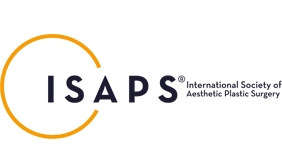How Long Does it Take to Recover from a Tummy Tuck?
- What is the expected recovery timeline?
- When can normal activities be resumed?
Is a Tummy Tuck Covered by Insurance?
- Under what conditions might insurance cover a tummy tuck?
- What documentation is needed for insurance claims?
How Long Will a Tummy Tuck Last?
- What factors affect the longevity of the results?
- Can lifestyle choices impact the results?
Related Articles
Alternatives to Tummy Tuck
- Non-Surgical Options
- Other Surgical Procedures
Patient Testimonials
- Success Stories
- Experiences with Dr Shehzadi Tasneem Sultan
Additional Resources
- Links to Further Reading
- Contact Information for Dr Shehzadi Tasneem Sultan
How is Tummy Tuck Done? 
What is a Tummy Tuck?
Definition of Tummy Tuck
A tummy tuck, also known as abdominoplasty, is a surgical procedure designed to remove excess skin and fat from the abdomen while tightening the abdominal muscles. This procedure aims to create a smoother and firmer abdominal profile.
Abdominoplasty Dubai Procedure
Abdominoplasty Dubai Procedure is a surgery that removes extra skin and fat from the belly area it helps make the tummy flatter and smoother for people who want a slimmer look
Types of Tummy Tucks (Full, Mini)
There are two main types of tummy tucks: full and mini. A full tummy tuck involves a larger incision and addresses the entire abdominal area, while a mini tummy tuck focuses on the lower abdomen with a smaller incision.
- Full Tummy Tuck : Involves a horizontal incision between the hip bones and around the navel.
- Mini Tummy Tuck : Involves a smaller incision below the navel and is suitable for patients with less excess skin.
Why is a Tummy Tuck Done?
Medical Reasons
A tummy tuck can be performed for medical reasons, such as repairing weakened or separated abdominal muscles, which can occur after pregnancy or significant weight loss. This can help alleviate back pain and improve posture.
Book A Consultation With Dr Shehzadi Tasneem
Top-rated Plastic Surgeon For Tummy Tuck in Dubai
Installment Plan Available
Cosmetic Reasons
Cosmetically, a tummy tuck is done to enhance the appearance of the abdomen by removing loose, sagging skin and excess fat. This procedure can help individuals achieve a more toned and youthful look.
- Improves abdominal contour
- Boosts self-confidence
- Removes stretch marks
Steps of a Tummy Tuck Procedure
Step 1 – Anesthesia
Types of Anesthesia Used
Anesthesia is crucial for a tummy tuck procedure to ensure patient comfort. General anesthesia is commonly used, but in some cases, local anesthesia with sedation may be an option.
Importance of Anesthesia
Anesthesia ensures that the patient remains pain-free and comfortable throughout the surgery. It also allows the surgeon to perform the procedure with precision and care.
- General Anesthesia : Patient is completely unconscious.
- Local Anesthesia with Sedation : Patient is awake but relaxed and pain-free.
Step 2 – The Incision
Location and Length of Incision
The incision for a tummy tuck is typically made horizontally between the pubic hairline and the navel. The length of the incision depends on the amount of excess skin to be removed.
Differences Between Full and Mini Tummy Tuck Incisions
A full tummy tuck requires a longer incision that extends from hip to hip, while a mini tummy tuck involves a shorter incision below the navel.
- Full Tummy Tuck : Hip-to-hip incision.
- Mini Tummy Tuck : Shorter incision below the navel.
Step 3 – Tightening Muscles and Removing Excess Skin
How Muscles are Tightened
During the procedure, the surgeon tightens the abdominal muscles by suturing them together. This creates a firmer abdominal wall and a more toned appearance.
Removal of Excess Skin and Fat
Excess skin and fat are removed to create a smoother and flatter abdominal profile. Liposuction may also be used to enhance the results.
- Muscle Tightening : Suturing of abdominal muscles.
- Skin and Fat Removal : Excision of excess tissue.
Step 4 – Closing the Incisions
Techniques for Closing Incisions
The incisions are closed using sutures, skin adhesives, or clips. The technique used depends on the surgeon’s preference and the patient’s needs.
Use of Sutures and Adhesives
Sutures are often used to close the deeper layers of tissue, while skin adhesives or clips may be used for the outer layers to minimize scarring.
- Sutures : Used for deeper layers.
- Skin Adhesives : Used for outer layers.
Step 5 – Seeing the Results
Immediate Post-Surgery Appearance
Immediately after surgery, the abdomen will appear flatter and firmer, but there will be swelling and bruising that will subside over time.
Long-Term Results
The final results of a tummy tuck are typically seen after several months, once the swelling has fully subsided. The abdomen will appear more toned and contoured.
- Immediate Results : Flatter abdomen with swelling.
- Long-Term Results : Toned and contoured abdomen.
Risks Associated with Tummy Tuck 
Common Risks
Infection
Infection is a common risk associated with any surgical procedure. Proper wound care and antibiotics can help prevent infections.
Scarring
Scarring is inevitable with a tummy tuck, but the surgeon will place incisions in areas that can be easily concealed by clothing.
- Infection : Preventable with proper care.
- Scarring : Concealable with strategic incision placement.
Rare Complications
Blood Clots
Blood clots are a rare but serious complication. Patients are encouraged to move around as soon as possible after surgery to reduce this risk.
Nerve Damage
Nerve damage can occur, leading to numbness or changes in skin sensation. This is usually temporary but can be permanent in rare cases.
- Blood Clots : Reduced by early movement.
- Nerve Damage : Usually temporary.
Recovery Process After a Tummy Tuck
Immediate Post-Operative Care
Hospital Stay
Patients may need to stay in the hospital for a day or two after surgery for monitoring and initial recovery.
Pain Management
Pain management is crucial during the initial recovery period. Medications will be prescribed to manage pain and discomfort.
- Hospital Stay : 1-2 days.
- Pain Management : Medications prescribed.
At-Home Care
Activity Restrictions
Patients will need to limit physical activity and avoid strenuous exercise for several weeks to ensure proper healing.
Follow-Up Appointments
Regular follow-up appointments with the surgeon are essential to monitor the healing process and address any concerns.
- Activity Restrictions : Avoid strenuous exercise.
- Follow-Up Appointments : Essential for monitoring.
Long-Term Recovery
Timeline for Full Recovery
Full recovery from a tummy tuck can take several months. Patients should follow their surgeon’s instructions to ensure optimal healing.
Tips for Maintaining Results
Maintaining a healthy lifestyle, including a balanced diet and regular exercise, can help preserve the results of a tummy tuck.
- Full Recovery : Several months.
- Maintaining Results : Healthy lifestyle.
Related Articles
Alternatives to Tummy Tuck
Non-Surgical Options
Non-surgical options, such as CoolSculpting and laser treatments, can help reduce fat and tighten skin without surgery.
Other Surgical Procedures
Other surgical procedures, such as liposuction and body lifts, can also improve the appearance of the abdomen.
- Non-Surgical Options : CoolSculpting, laser treatments.
- Other Surgical Procedures : Liposuction, body lifts.
Patient Testimonials
Success Stories
Many patients have shared their success stories, highlighting the positive impact a tummy tuck has had on their lives.
Experiences with Dr Shehzadi Tasneem Sultan
Patients who have undergone tummy tucks with Dr Shehzadi Tasneem Sultan have praised her expertise and compassionate care.
- Success Stories : Positive impact on lives.
- Dr Shehzadi Tasneem Sultan : Expertise and compassionate care.
Additional Resources
Links to Further Reading
For more information on tummy tucks, consider reading articles from reputable medical websites and journals.
Contact Information for Dr Shehzadi Tasneem Sultan
To schedule a consultation or learn more about tummy tucks, contact Dr Shehzadi Tasneem Sultan’s office.
- Further Reading : Reputable medical websites.
- Contact Information : Dr Shehzadi Tasneem Sultan’s office.
Frequently Asked Questions
How is Tummy Tuck Done?
A tummy tuck involves several steps, including anesthesia, making an incision, tightening muscles, removing excess skin, and closing the incisions. The surgery typically takes 2-3 hours.
How Long Does it Take to Recover from a Tummy Tuck?
The expected recovery timeline for a tummy tuck is several months. Most patients can resume normal activities within 4-6 weeks, but full recovery may take longer.
What are the Risks Associated with a Tummy Tuck?
The most common complications include infection and scarring. Rare complications can include blood clots and nerve damage. Risks can be minimized by following the surgeon’s instructions.
Is a Tummy Tuck Covered by Insurance?
Insurance may cover a tummy tuck if it is deemed medically necessary, such as for repairing abdominal muscles. Documentation from a healthcare provider is required for insurance claims.
How Long Will a Tummy Tuck Last?
The results of a tummy tuck can last for many years. Factors such as aging, weight fluctuations, and lifestyle choices can impact the longevity of the results.












